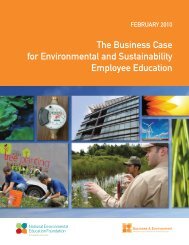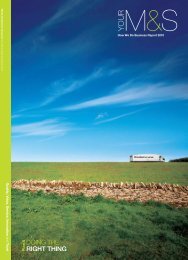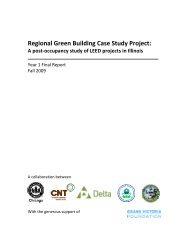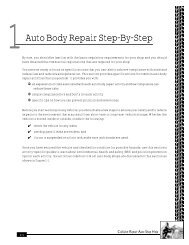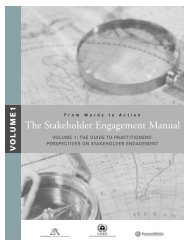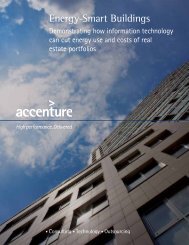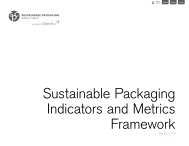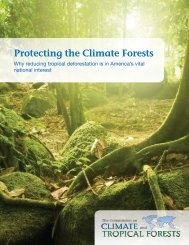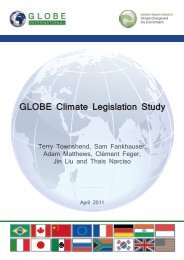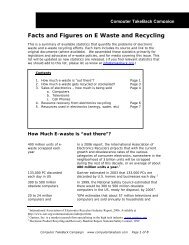CEA 2010 Sustainability Report - Consumer Electronics Association
CEA 2010 Sustainability Report - Consumer Electronics Association
CEA 2010 Sustainability Report - Consumer Electronics Association
Create successful ePaper yourself
Turn your PDF publications into a flip-book with our unique Google optimized e-Paper software.
DIRECTV Boosts Efficiency by Packing More Products Per Container<br />
DIRECTV’s Supply Chain department found an innovative solution to packaging its equipment<br />
that saved the company money and helped it to be greener. Previously, DIRECTV shipped<br />
receivers and dishes one item per carton, a method that was costly and consumed a large<br />
quantity of packing materials. Now, four receivers are shipped in one multi-pack container and<br />
its satellite dishes are shipped two or more per container. This new approach has decreased<br />
its use of cartons by more than one million in 2009 — a 75 percent reduction in packaging<br />
from the previous year. Styrofoam packing materials used to pack its rooftop dish assembly<br />
have also been replaced with materials made from paper pulp, which can be recycled. In 2011,<br />
all DIRECTV products will be packed with 100 percent recyclable materials.<br />
E N V I RO N M E NTA L<br />
PERFORMANCE<br />
SUSTAINABLE<br />
PRODUCT DESIGN<br />
SUSTAINABLE<br />
PACKAGE DESIGN<br />
SUSTAINABLE<br />
FACILITIES<br />
Many CE companies are switching to renewable<br />
materials, including bio-based plastics, or recyclable<br />
materials such as cardboard instead of plastic<br />
clamshell packaging. In 2009, Dell began shipping<br />
all Inspiron Mini 10 and 10v netbooks in packaging<br />
made from bamboo, a highly renewable and<br />
certified compostable material. Dell has now<br />
extended the use of bamboo packaging to a<br />
number of their Inspiron laptops as well.<br />
The Sustainable Packaging Coalition (SPC),<br />
an industry working group with a robust environmental<br />
vision for packaging, created a common<br />
definition of sustainable packaging to encourage<br />
companies to reduce their environmental<br />
impact. This definition includes characteristics<br />
such as using renewable energy to produce<br />
the packaging, utilizing recycled material, and<br />
designing to optimize materials and energy. For<br />
example, MeadWestvaco, a founding member<br />
of SPC, offers Natralock packaging that uses<br />
less energy and plastic to manufacture for<br />
customers in the CE and other industries.<br />
End-of-Life Considerations<br />
As packaging is typically disposed of once the<br />
product is in use, end-of-life considerations play<br />
a significant role when designing more sustainable<br />
packaging. CE companies are using recyclable<br />
materials to limit the amount of packaging headed<br />
to landfills for disposal, as well as to increase the<br />
ease of opening the package. Philips switched to<br />
recyclable packaging for its Essence toothbrush<br />
and saved money in the process.<br />
A product’s design and packaging greatly influence<br />
its overall sustainability, but a portion of the<br />
product’s footprint is directly related to the<br />
conditions in which it was manufactured and<br />
processed. The next section of the report<br />
addresses what CE companies are doing<br />
to make their facilities more sustainable.<br />
SUSTAINABLE<br />
TRANSPORT<br />
& DELIVERY<br />
ENERGY<br />
EFFICIENCY<br />
ECYCLING<br />
SOCIAL<br />
PERFORMANCE<br />
SOCIAL<br />
CONTRIBUTIONS<br />
CORPORATE<br />
SUSTAINABILITY<br />
REPORTING<br />
Philips Goes Frustration Free<br />
When Philips learned from Amazon.com<br />
that its customers were struggling to remove<br />
the clamshell packaging on its Sonicare Essence<br />
electronic toothbrush, it asked supplier<br />
AllpakTrojan to create a new package that<br />
was easier to open. Within three weeks, the<br />
supplier had designed a new container that<br />
addressed Philips’ needs and decreased the<br />
packaging’s environmental impact. The square<br />
footage of material used is much smaller, as<br />
cardboard mass reduced from 160 grams (g)<br />
to 140g and plastic mass reduced from 60g<br />
to 2g, plus the cardboard is now recycled and<br />
recyclable. In addition, without the fancy printing,<br />
shiny cardboard backing and plastic, the<br />
packaging is much less expensive. Philips was<br />
so pleased with the change that it is looking<br />
to switch the packaging for other items and<br />
is currently pushing online retailers to adopt<br />
this packaging.<br />
CE A <strong>2010</strong><br />
SUSTAINABILIT Y<br />
REPORT<br />
17



